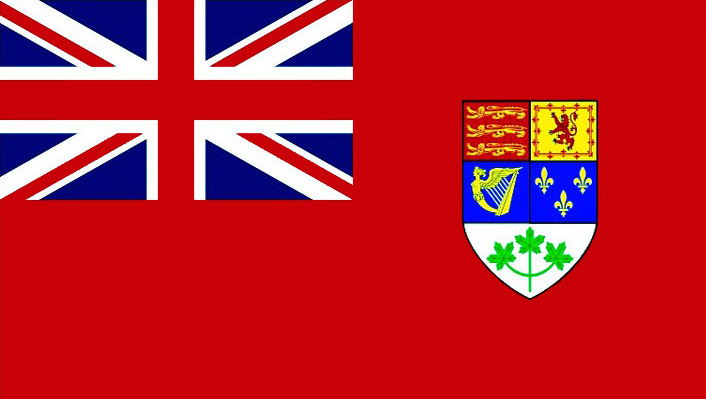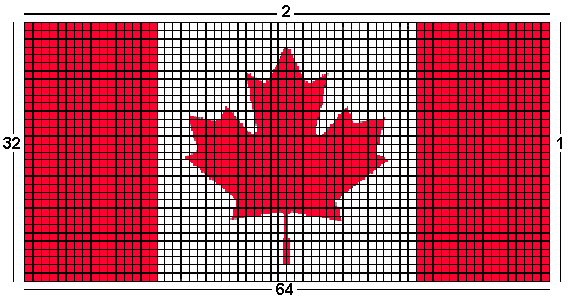Canadians everywhere have a strong sentimental attachment to their national flag. This may seem unusual to many, given that it was only created in 1964. It replaced the Canadian Red Ensign which was used by the federal government, though never officially adopted by the Canadian Parliament. It is a British Red Ensign, featuring the Union Flag in the canton and the shield of the Canadian Coat of Arms.
The search for a new Canadian flag started in earnest in 1925 when a committee of the Privy Council began to research possible designs for a national flag. However, the work of the committee was never completed. Later in 1946, a select parliamentary committee was appointed with a similar mandate, called for submissions and received more than 2,600 designs. Still, the Parliament of Canada was never called upon to formally vote on a design.
Early in 1964, Prime Minister Lester B. Pearson informed the House of Commons that the government wished to adopt a distinctive national flag. The 1967 centennial celebration of Confederation was, after all, approaching. As a result, a Senate and House of Commons Committee was formed and submissions were called for once again.
In October 1964, after eliminating various proposals, the committee was left with three possible designs: a Red Ensign with the fleur-de-lis and Union Jack, a design incorporating three red maple leaves, and a red flag with a single, stylized red maple leaf on a white square. (Pearson himself preferred a design with three red maple leaves between two blue borders.)
Two heraldry experts, who both favoured a three-leaf design, played a decisive role in the choice of our flag: Alan Beddoe, a retired naval captain and heraldic adviser to the Royal Canadian Navy, and Colonel Fortescue Duguid, a heraldist and historian.
The names of Mr. John Matheson and Dr. George Stanley are well known in the story of the evolution of a new Canadian flag. Mr. Matheson, a Member of Parliament from Ontario, was perhaps one of the strongest supporters of a new flag and played a key advisory role. Dr. Stanley was Dean of Arts at the Royal Military College in Kingston, and brought to the attention of the committee the fact that the Commandant’s flag at the College — an emblem, i.e. a mailed fist, on a red and white ground — was impressive.
Dr. Stanley’s design is based on a strong sense of Canadian history. The combination of red, white and red first appeared in the General Service Medal issued by Queen Victoria. Red and white were subsequently proclaimed Canada’s national colours by King George V in 1921. Three years earlier, Major General (later the Honourable) Sir Eugene Fiset had recommended that Canada’s emblem be the single red maple leaf on a white field – the device worn by all Canadian Olympic athletes since 1904.
The committee eventually decided to recommend the single-leaf design, which was approved by resolution of the House of Commons on December 15, 1964, followed by the Senate on December 17, 1964, and proclaimed by Her Majesty Queen Elizabeth II, Queen of Canada, to take effect on February 15, 1965. In due course the final design of the stylized maple leaf was established by Mr. Jacques St-Cyr, the precise dimensions of red and white were suggested by Mr. George Best, and the technical description of precise shade of red defined by Dr. Gunter Wyszchi.
The official ceremony inaugurating the new Canadian flag was held on Parliament Hill in Ottawa on February 15, 1965, with Governor General Georges Vanier, Prime Minister Lester B. Pearson, the members of the Cabinet and thousands of Canadians in attendance.
The Canadian Red Ensign, bearing the Union Jack and the shield of the royal arms of Canada, was lowered and then, on the stroke of noon, our new maple leaf flag was raised. The crowd sang the national anthem O Canada followed by the royal anthem God Save the Queen.
The following words, spoken on that momentous day by the Honourable Maurice Bourget, Speaker of the Senate, added further symbolic meaning to our flag: “The flag is the symbol of the nation’s unity, for it, beyond any doubt, represents all the citizens of Canada without distinction of race, language, belief or opinion.”
(Source: Canadian Heritage, Government of Canada)



